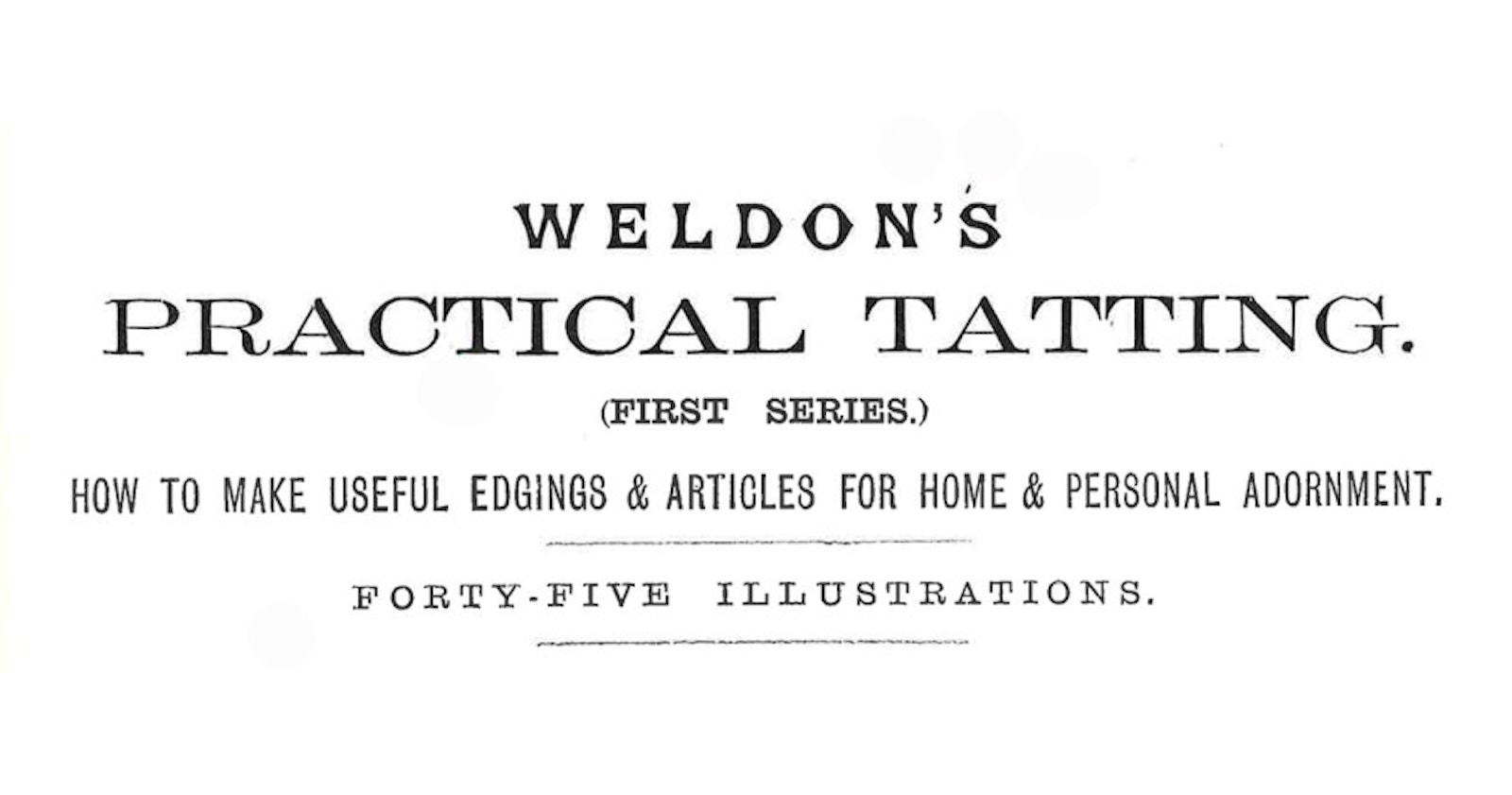Weldon’s Practical Needlework houses a wealth of information on Victorian tatting. Here’s our sixth installment in this series from Weldon’s Practical Needlework, Volume 4. The following are methods for working picots and ovals joined by picots. It is reproduced here just as it appeared in England in 1889. No alterations or corrections were made.
Illustrations from Weldon’s Practical Needlework, Volume 4.
Fig. 10.—PICOTS.
A PICOT, or, as some call it, a “purl,” is formed by leaving a loop of cotton between the double stitches. The size of this loop of cotton will vary according to the requirements of the pattern you are working, and may be regulated by the use of the pin, or the eye will usually be a correct guide, with the help occasionally of the point of the shuttle to raise any picot that may not be so high or so well rounded as desired. Every picot is quite independent of the stitch before and after it; thus the example Fig. 10 is worked—2 double stitches, 1 picot, 2 double, 1 picot, 2 double, 1 picot, 2 double, 1 picot, 2 double, 1 picot, 2 double. Picots are used to ornament the edges of scalloped lace, and also to connect various parts of the pattern together.
Illustrations from Weldon’s Practical Needlework, Volume 4.
Fig. ll.—OVALS JOINED TOGETHER BY PICOTS.
FOR the 1st oval—Make a loop on the fingers with the shuttle thread, work 4 double stitches, 1 picot, 8 double, 1 picot, 4 double, and draw up close. For the 2nd oval—Make a loop, do 4 double, take a pin or a steel crochet needle and insert it in the last picot of the previous oval, pass it above the first finger over the cotton of the loop that is round your fingers, and bring a portion of this cotton through the picot in a loop, now pass the shuttle from right to left through this little loop of cotton, and then draw in the loop level with the last stitch of the tatting, work 8 double stitches, 1 picot, 4 double, and draw up close; all the following ovals are worked in the same manner as this last oval. Our illustration, Fig. 11, shows four ovals fully worked, and part of the fifth oval with the cotton as it appears in process of joining when the shuttle thread is passed through the little loop before it is drawn level with the last stitch of the tatting; the joining by picots must not in any way interfere with the shuttle thread drawing easily to increase or decrease the size of the loop round the fingers.
If you missed any part of this series on Victorian tatting from Weldon’s, you can catch up on all of the blog posts here. Find out more about tatting in our video download Shuttle Tatting with master tatter Georgia Seitz.
Featured Image: Weldon’s Practical Needlework, Volume 4, offers up a wealth of information on Victorian tatting.



